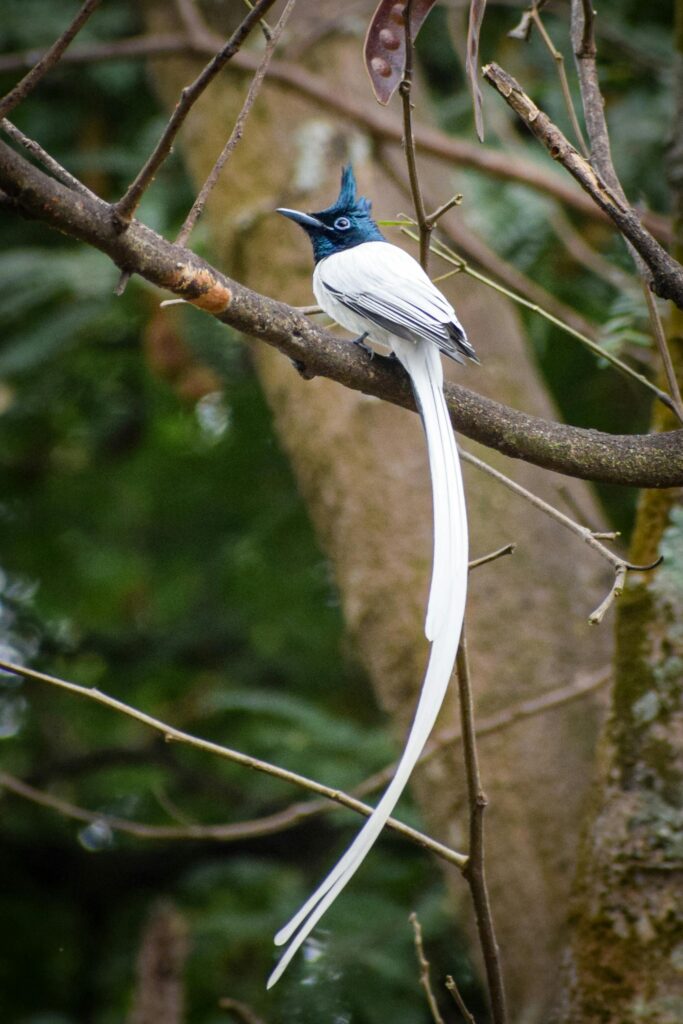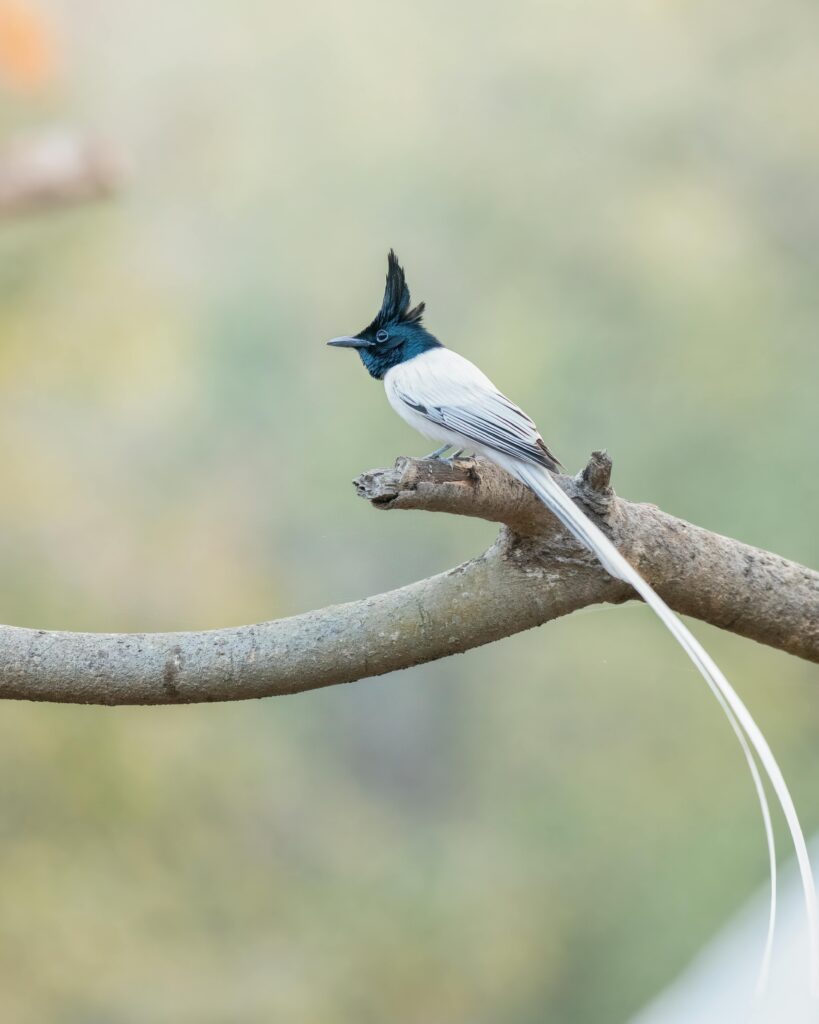

 22.85°C काठमाडौं
22.85°C काठमाडौं

Every year, as spring turns into summer, something quiet and magical happens in Nepal’s forests. The ribbon-tailed beauty appears in two versions as it passes through the trees: either displaying white folds or revealing warm chestnut-brown feathers. You might think you saw something wrong at first, as its appearance is so fleeting — but with patience, its true presence is revealed. The silken figure soars through the open air once again.
Asian Paradise Flycatcher — that’s what it is.
For bird lovers, this bird offers a special experience. During this time, nature puts on a small demonstration of its beauty. The flycatcher captivates with its graceful flight and visually striking tail. Nepal’s green spaces regain life, color, and a sense of mystery when this special visitor arrives.

The Asian Paradise Flycatcher (Terpsiphone paradisi) is an exceptional species of avian life. It spends its winters in tropical regions such as southern India, Sri Lanka, and Southeast Asia, then migrates north to breed across Nepal, northern India, and southern Kazakhstan, beginning in March or April each year. This timing overlaps with Nepal’s tourist season, which runs from April through August and into early September.
The area where these birds can be found spans elevations from sea level up to 1,500 meters, with sightings most common around 1,000 meters. The bird thrives in dense forests with dark canopy coverage — habitats that include deciduous and evergreen species, bamboo stands, and shrublands.
It prefers Nepal’s mid-hill forests, where vegetation is thick and human interference is minimal. These birds are often spotted in wooded mid-elevation regions such as Godavari, Phulchowki, and Shivapuri Nagarjun, along with other areas within the Kathmandu Valley. Chitwan and Bardia also attract flycatchers, primarily during their annual migration.
A glimpse of this bird explains why so many people are enchanted by it. The male flycatchers are especially striking. They appear in two distinct color variants — either white with a black head and long tail or chestnut-brown with a black head and long tail. Though their body measures only about 20 centimeters, the trailing streamers can extend the bird’s full length up to 50 centimeters.
The female is smaller, less colorful in brown tones, and lacks the long tail, yet she shares the same elegant movement patterns.
When perched, these birds maintain a straight posture. But as they launch into the air, they transform into silken ribbons, performing smooth and flowing aerial movements. Their body design allows them to hunt insects mid-air with sharp maneuvering. With quick, darting turns and sudden changes in direction, they catch prey in flight. Often, the bird’s distinctive “zweet” call reaches your ears before your eyes can spot it through the treetops.
Flycatchers stay in Nepal only during specific seasons, arriving with two main goals: mating and child-rearing. The breeding season stretches from March to August, with peak nesting activity in May and June. Males perform courtship displays with their long tails, showcasing acrobatic flight and dance-like fluttering. Birdwatchers in Nepal have observed males engaging in multi-partner mating and building multiple nests — suggesting that these birds do not strictly follow monogamy.
After pairing, both birds work together to build a cup-shaped nest made of twigs, spiderwebs, roots, and bark, usually tucked securely in a branching fork above the ground. Some flycatchers even build their nests near aggressive birds like drongos to benefit from additional protection against predators.
The female lays 2 to 4 pink eggs with reddish-brown spots. Both parents take turns incubating the eggs over the next two weeks. After hatching, the chicks remain in the nest for 10 to 18 days, during which both parents feed and guard them. Even after fledging, the young continue to receive care from their parents until they become more independent.
At present, the Asian Paradise Flycatcher holds a “Least Concern” status on the IUCN Red List, thanks to its stable population. However, this doesn’t mean it’s free from danger. Real threats include deforestation, hunting, human noise pollution, and habitat encroachment.

These birds are highly sensitive to environmental changes. They need peaceful woodlands and thriving insect populations to survive. In disturbed areas, nesting becomes challenging, and human activity may cause adult birds to abandon their eggs. While they’re still relatively common, they need our protection — because stability today doesn’t guarantee safety tomorrow.
Thanks to national park and community forest protections, Nepal’s habitats have so far remained relatively preserved. But continued urban expansion threatens the forest edges and may one day prevent these birds from returning.
The Asian Paradise Flycatcher’s migration is more than a seasonal journey—it’s a natural thread that weaves together nations across Asia. Flying freely through tropical forests in India, Sri Lanka, and Nepal, this bird proves that ecosystems don’t follow political borders. Its migration underscores the importance of regional cooperation in conservation efforts.
Countries across South and Southeast Asia must work together to protect shared forests and enforce hunting regulations to ensure the survival of these birds. Nature works best when human-imposed borders don’t interfere with the flycatcher’s path through an increasingly divided world.
The Asian Paradise Flycatcher reminds us that wild beauty still thrives. Every year, it travels over 1,000 kilometers, guided only by instinct, to return to the same forested landscapes. So, next time you find yourself under a leafy canopy, stop. Listen. Look up.
Above you, nature might unveil its wonder in the form of a ribbon-tailed ghost soaring through the trees. In that moment, you’ll understand why wildlife sanctuaries—and the peace they offer—are worth protecting.